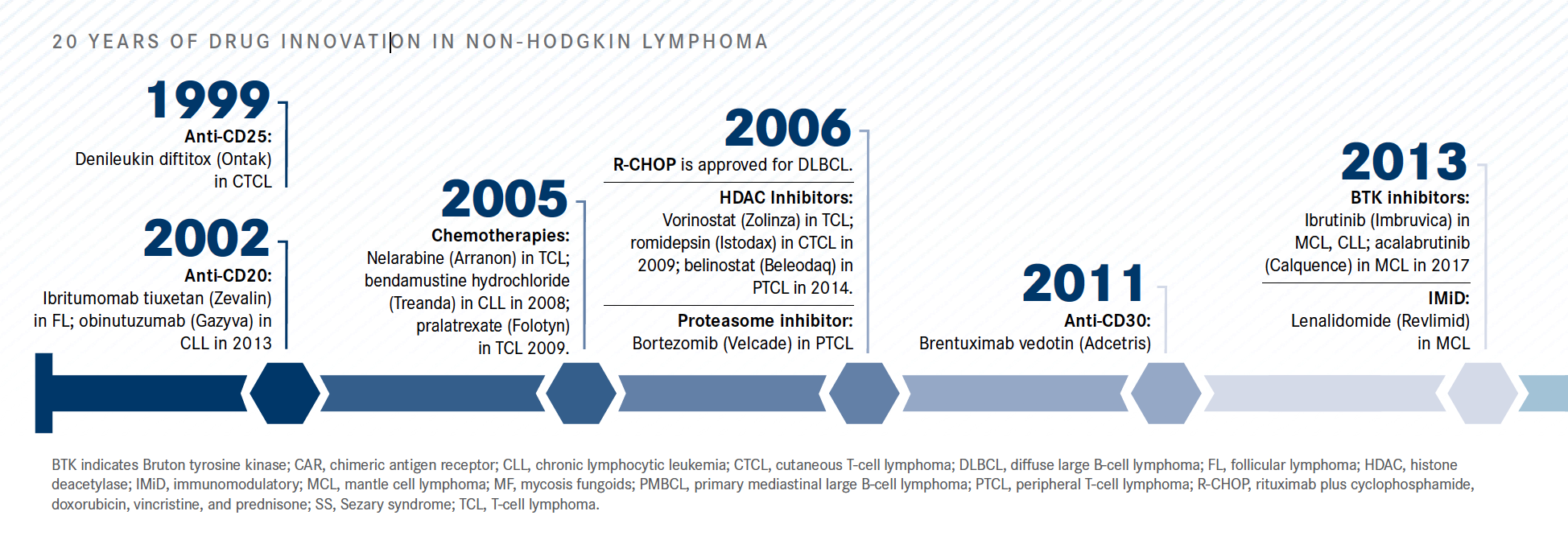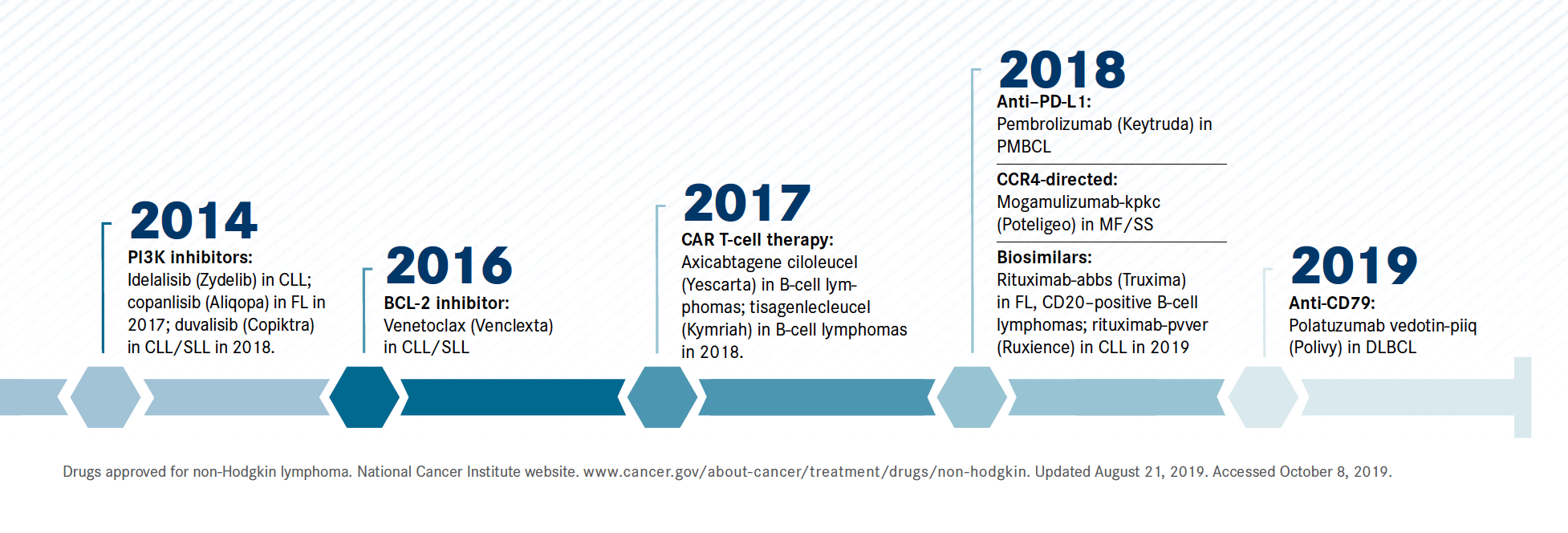Rituximab Sets the Pace in Changing Lymphoma Landscape
Rituximab is used ubiquitously in the treatment of B-cell lymphomas, and has set the paradigm the field has been trying to match in drug development.
Jonathan W. Friedberg, MD, MMSc

Jonathan W. Friedberg, MD, MMSc
In any discussion of notable advances in treating lymphoma, rituximab (Rituxan) takes center stage. The FDA first approved rituximab in 1997 for relapsed/ refractory low-grade or follicular CD20-positive B-cell non-Hodgkin lymphoma based on a single-arm trial whose results showed relatively modest efficacy (48% overall response rate). Nobody at the time of the agent’s approval could ever have imagined the transformative effect the drug would have on the management of B-cell lymphoma. Results of randomized trials soon showed overall survival benefits for rituximab combined with chemotherapy in diffuse large B-cell lymphoma (DLBCL) and follicular lymphoma, as well as the drug’s value in treatments following stem cell transplantation.
We now use rituximab ubiquitously in the treatment of B-cell lymphomas. I cannot overstate how important this drug has been, and it has set the paradigm we have been trying to match in drug development.
The advent of positron emission tomography (PET) imaging for staging, response evaluation, and posttreatment surveillance was another major advance in the management of patients with lymphoma. Twenty years ago, we were routinely using gallium scans and computed tomography scans. Functional imaging has made staging much more accurate, and in many situations, we have been able to abandon the use of bone marrow biopsies and other cumbersome tests. Many clinicians are using PET imaging in early-stage Hodgkin lymphoma to determine whether a patient needs radiation therapy. In more aggressive lymphomas, PET is an accepted standard for response assessment.
Another advance in PET scanning was the formalization of interpretative criteria. For years, PET results were either positive or negative, and everybody used different definitions. We now have the Deauville scoring criteria, which are widely accepted and incorporated into the Lugano classification for staging of lymphomas. In PET scan interpretation, we are now looking forward to the incorporation of new criteria, such as total metabolic tumor volume and changes over time in standardized uptake value, that these may ultimately be more predictive of outcome than the Deauville scoring system.
Our understanding of the genomic and molecular basis of DLBCL has grown exponentially in the past 20 years, enabling us to define a number of subgroups of patients within that broad category of DLBCL who have different potential therapeutic outcomes.
One of the unfortunate things is that in most cases, we have failed to translate that knowledge into therapy. We could certainly allude to the fact that with the cell of origin classification, despite several randomized phase III trials involving thousands of patients, a demonstrated benefit has not been observed in the treatment of patients with activated B-cell subset DLBCL. We had hoped we could be using genomic classifications to assign treatments by this time, but that does not mean the line of thinking was wrong. We now appreciate molecular heterogeneity within genomic classifications and challenges in conducting prospective trials in these subsets of patients, and are still hoping that a precision medicine approach will ultimately be used for DLBCL treatment.
We have also seen tremendous progress in the cellular therapy domain. In the ’90s, autologous stem cell transplant (ASCT) was relatively new and we were still learning how best to do it. In ASCT, we have gotten away from total body irradiation and are now focused on chemotherapy-only conditioning regimens, which decrease longterm toxicities.
The field of nonmyeloablative allogeneic stem cell transplantation has really taken off over the past 20 years, and I would say its application in lymphomas has been modest compared with that in leukemias. But certainly in some lymphomas, nonmyeloablative transplantation has allowed us to perform transplants on patients who otherwise may not have been candidates.
The biggest change in cellular therapy has been the evolution of chimeric antigen receptor (CAR) T-cell therapy over the past few years. We have 2 approved treatments and more on the way, and these products have been able to convert patients who had no therapeutic options into patients who are likely cured. We are clearly at the beginning of the era. These products are expensive and come with a lot of toxicities we are learning to manage, but CAR T-cell therapy has changed the way we think about relapsed lymphomas.
Click to Enlarge

Click to Enlarge

The previous 2 decades have also seen an increased focus on the patient and the patient’s experience with the cancer journey. In particular, we have acknowledged the burden of cancer survivorship as more of our patients are cured or are living with cancer treatment or its aftermath. Our ability to measure this burden with patient-reported outcomes and quality-of-life instruments has improved, and studies are now looking much more holistically at the impact of treatment compared with studies in the ’90s, which focused solely on tumor response. A whole generation of investigators are now interested in these questions, and that is a good thing for our field.




